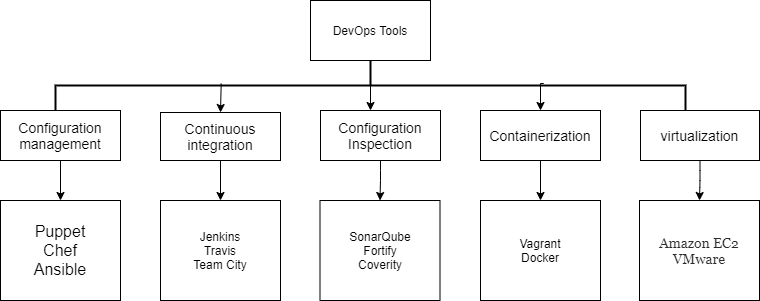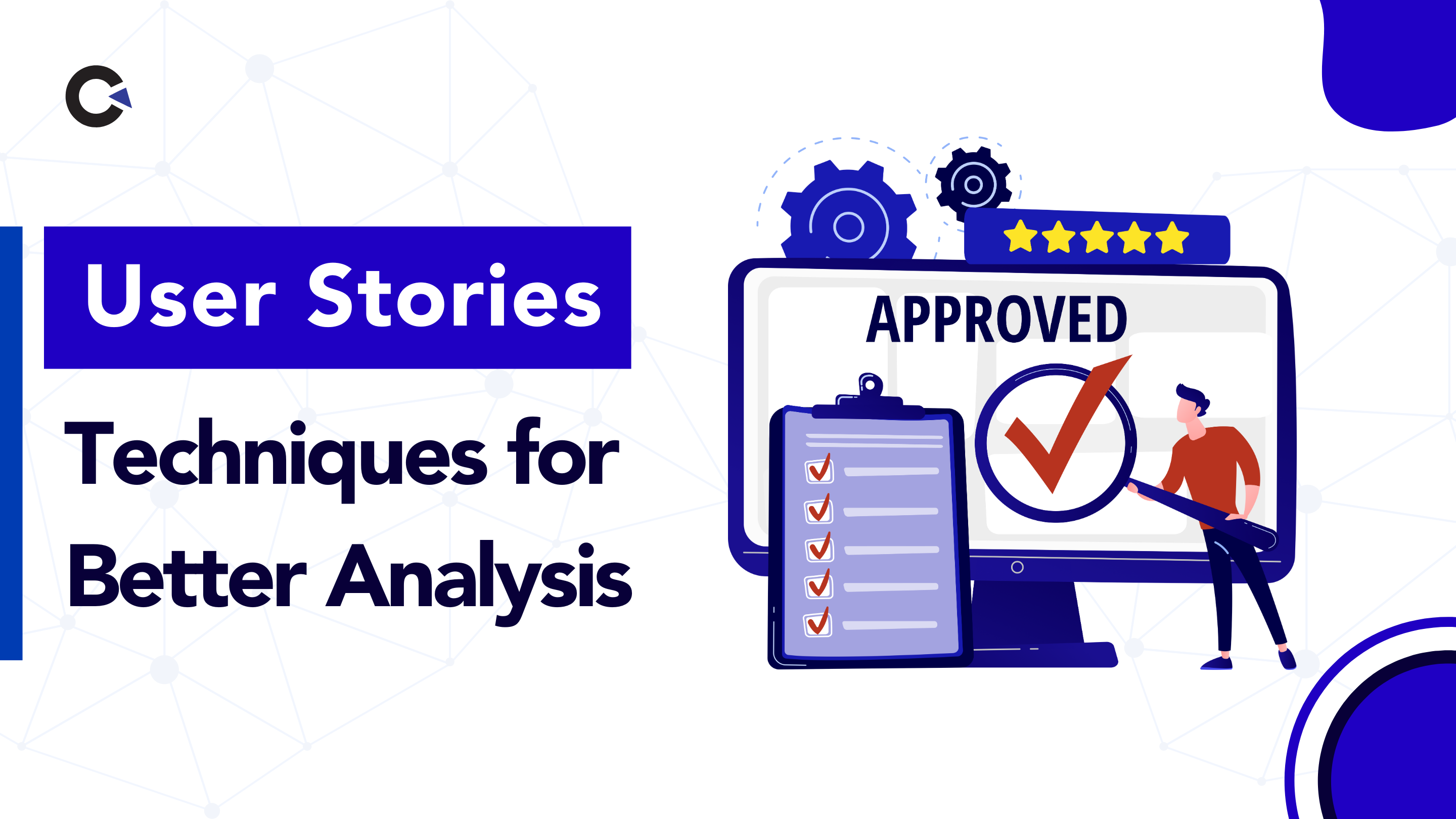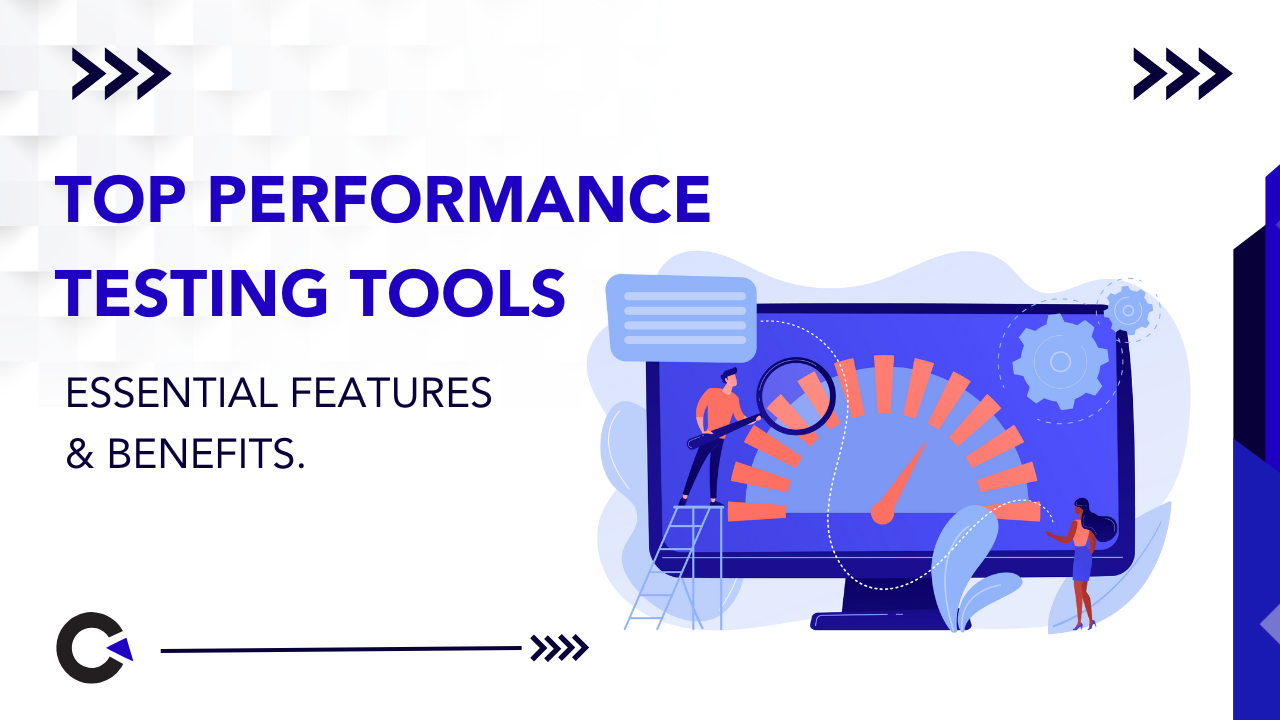
by admin | Oct 1, 2021 | Software Testing, Blog |
There are different testing approaches available today; besides manual testing, automated testing is also possible today. There are many test automation frameworks and tools on the market—sometimes, though, manual testing is still the better option. If you want to hire software testers and are choosing between manual testing services and automated testing, you should keep these in mind.
Setting up a Manual Test Takes Less Time
Though the execution is faster with automated testing, setting up takes a lot of time. In many cases, it is faster to do a manual test. If you are starting with the project, you can create the infrastructure for an automated test.
If the project is already in full swing and has various interconnected parts, automation will take up time and resources. If it is too complex, it could even be impossible to create the proper environment for automatization.
Manual Testing Simultaneously Improves UX
Automated tests only check for values and functionality, not aesthetics. However, it isn’t enough for end-users that software is functional—it should also be easy to use. If the user interface has plenty of interactive elements, it’s easier and more affordable to go for manual testing. You can automate SDK and API portions of the interface, but you need a human touch when reviewing the visual details.
Testing Requires High-Security Access
If you have a complex project, you likely have multiple access levels for people from different departments. In manual testing, you can provide access to the systems and environments that the tester will directly handle and prevent them from accessing others.
This isn’t the case in some automated test projects. Carefully weigh whether you should use automated testing—you cannot test systems where the engineers don’t have the required access level.
Changing Many Things? Choose Manual Testing
If you are still developing your application and have not reached a stable version, don’t waste resources in creating an automated test. It is because each version update would require you to update your tests as well. Automated test outcomes are likely to be false if the app is not stable; otherwise, you will get reliable outcomes.
However, if you have the product out in the market and have a steady user base, automation could help you prevent regressions between updates. Software testing companies should help you determine the better option for your company at the moment.
Manual Tests Help Validate User Stories
Finally, you cannot validate user stories if you don’t do manual tests. You need to verify the functionality against the documentation, and only a test engineer can do this. If you add an automated test right away, you won’t be able to verify the functionality of the changes—automating could even raise defects.
Once you have the manual tests finished, the engineer can create test scenarios. Objective testing of functionality requires defects to be fixed—after that, it is possible to create automated tests.
Conclusion
Manual and automated testing have their advantages and disadvantages. While automated tests create a more efficient workflow, they aren’t always the best option to start with, especially for companies with ongoing and complex projects. It is up to the test engineer to determine the methods which suit the project and at what stage they should implement these.
Codoid is an industry-leading software testing company. Our manual testing services include UX and usability testing to DB, GUI, localization, and more. Let’s talk about your project; contact us for inquiries!

by admin | Oct 1, 2021 | Software Testing, Blog, Latest Post |
DevOps testing strategy can be defined as more of a team effort as it categorizes the best working shift that is conclusive of both the timing and frequency of a developer’s testing practice in an automated fashion. Though such radical transformation might not be easy for some testers, proper use of strategies can be a game-changer. As a leading QA company, we always make sure to implement the best DevOps Testing Strategy to streamline our testing process. Such best strategies can be created by following the tips and tools that we will be exploring in this blog. So in this blog, we will be introducing you to the benefits of an effective DevOps Testing Strategy and the tips & tools you could use to implement that strategy for yourself.
Benefits of using an effective DevOps Testing Strategy:
A company can stay ahead of the pack in today’s competitive market by becoming more efficient with its process to offer the finest features to customers on time. Here are some of the major advantages that a firm may gain by implementing the DevOps methodology.
Higher Release Velocity:
DevOps practices help in increasing the release velocity which enables us to release the code to production at faster rates. But it is not just about the speed as we will be able to perform such releases with more confidence.
Shorter Development Cycle:
With the introduction of DevOps, the complete software development cycle starting right from the initial design up to the production deployment becomes shorter.
Earlier Defect Detection:
With the implementation of the DevOps approach, we will be able to identify defects much earlier and prevent them from getting released to production. So improved quality of software events becomes a natural byproduct of DevOps.
Easier Development Rollback:
In addition to earlier defect detection, we will also be able to predict possible failures due to any bug in the code or issue in production are analyzed in DevOps, we need not worry about the downtime for rollback. It either avoids the issue altogether or makes us better equipped to handle the situation. Even in the event of an unpredicted failure, a healthy DevOps process will make it easier for us to recover from it.
Curates a Collaborative Culture:
The core concept of DevOps itself is to enhance the collaboration between the Dev & Ops team so that they work together as one team with a common goal. The DevOps culture brings more than that to the table as it encourages employee engagement and increases employee satisfaction. So engineers will be more motivated to share their insight and continuously innovate, enabling continuous improvement.
Performance-Oriented Approach:
DevOps can ensure an increase in your team’s performance as it encourages a performance-oriented approach. Coupling that with the collaborative culture, the teams become more productive and more innovative.
More Responsibility:
Since DevOps engineers share responsibility for key deliverables and goals, we will be able to witness an enhanced perspective that prevents siloed thinking and helps guarantee success.
Better Hireability:
DevOps cultures require a variety of skill sets and specializations for successful implementation. Studying DevOps is a lucrative career path for development staff, operations staff, and also a great advantage for digital & IT spheres.
On the whole, DevOps focuses on removing siloed perspectives that ensure pipelines are delivered with as much business value as possible.
Tips to create an effective DevOps Testing Strategy:
Now that we have seen all the benefits that an effective DevOps Testing Strategy has to offer, let’s explore a few tips that one would have to follow to reap such benefits.
1. Deploy small changes as often as possible:
Deploy small changes frequently as it allows for a more stable and controllable production environment. Even in the case of a crucial bug, it will be easier to identify it and come up with a solution.
2. Infrastructure as code:
An incentive to adopt infrastructure as code is to allow more governance of the deployment process between different environments to enable a faster, more efficient, and reliable deployment by automation management, rather than a manual process.
3. GIT log commit messages:
Viewing the GIT log can be very messy. A good way to make GIT log clear and understandable is to write a meaningful commit message. A good commit message consists of a clear title (first line) and a good description (body of the message).
4. Good read – “DevOps Handbook”:
Books are always one of the best ways to learn and the DevOps Handbook can answer a lot of questions you might have such as,
What is DevOps culture?
What are its origins?
How to evaluate DevOps work culture?
How to find the problems in your organization’s process and improve them?
5. Build Stuff:
Linux, Cloud, DevOps, coding, AWS Training, DevOps to AWS free tier, Docker play, KBS play, and code on Github.
Tools to make an effective DevOps Testing Strategy:
We have already established that the DevOps movement encourages IT departments to improve developer, sysadmin, and tester teamwork. So it’s more about changing processes and streamlining workflows between departments than it is about using new tools when it comes to “doing DevOps.” As a result, there will never be an all-in-one DevOps tool.
However, if you have the correct tools, you can always benefit. DevOps tools are divided into five categories based on their intended use at each stage of the DevOps life cycle.

Configuration Management:
First off, we have configuration management and it is about managing all the configurations of all environments of a software application. To implement continuous delivery, use an automated process for version control. Even with the manual process, apply all changes automatically. It will be deployed through automation by checking the scripts.
Configuration management is classified in two ways:-
1. Infrastructure as code
2. Configuration as code
Infrastructure as code:
It is defining the entire environment definition as a code or script. Environment definition generally includes setting up the servers for comparing & configuring the networks and setting up other computing resources. Basically, they are part of the IT infrastructure setup. All these details would be written out as a text file or in the form of code. They are then checked out into a version control tool where they would become the single source of defining the environments or even updating the environments. This crushes the need for a developer or tester to be a system admin expert to set up their servers for development or testing activity. So the infrastructure setup process in DevOps would be completely automated.
Configuration as code:
It is defining the configuration of the servers and the components as a script and checking them into version control. It either includes parameters that define the recommended settings for software to run successfully or a set of commands to be done initially to set up the software applications or it even could be a configuration of each of the components of the software that are set up. It could also be any specific user rules or a user privilege.
Puppet:
Puppet is a well-established Configuration Management platform. When we talk about configuration management in terms of servers (i.e.) when you have a lot of servers in a data center or in an in-house setup. You will want to keep your servers in a particular state. Since Puppet is also a deployment tool, a simple code can be written and deployed onto the servers to automatically deploy the software on the system. Puppet implements infrastructure as code. The policies and configurations are also written as code.
Chef:
Chef is infrastructure as code. Chef ensures our configurations are applied consistently in every environment at any scale with the help of infrastructure automation. Chef is best suited for organizations that have a heterogeneous infrastructure and are looking for the following mature solutions.
1. Programmatically provision and configure components.
2. Treat it like any other codebase.
3. Recreate business from code repository, data backup, and compute resources.
4. Reduce management through abstraction.
5. Reserve the configuration of your infrastructure in version control.
Chef also ensures that each node compiles with the policy and the policy is determined by the configurations in each node’s run list.
Ansible:
Ansible has a lot going for itself as it’s configuration management, deployment, and orchestration tool. Since it is focused mainly on multiple profiles, we will be able to configure them automatically. After which, we can automate them and benefit from them with deployment purposes like Docker as we also have an authorization tool available in Ansible. We know that it is a “push-based” configuration management tool. When it comes to pushing, let’s say we want to apply changes on multiple servers, we can just push the changes and not configure the entire system or nodes. It automates your entire IT infrastructure by providing large productivity gains.
Continuous integration (CI):
Continuous integration is a DevOps software development practice that enables the developers to merge their code changes in the central repository so that the automated builds and tests can be run. Continuous integration is considered as such an important process due to the following reasons.
1. It avoids merge conflicts when we sync our source code from our systems to the shared repository. It helps different developers to collaborate their source code into a single shared repository without any issues.
2. The time we spend on code review is something that we can easily decrease with the help of this continuous integration process.
3. Since the developers can easily collaborate with each other, it speeds up the development process.
4. We will also be able to reduce project backlog as we will be able to make frequent changes in the repositories. So if any kind of product backlog is pending for a long time, it can be managed easily.
Jenkins:
It is a continuous integration tool that allows continuous development, test, and deployment of newly created codes. It is an open-source automation server. Jenkins is a web-based application that is completely developed in Java. Jenkins script uses groovy in the back end. It is used for integrating all DevOps stages with the help of plugins to enable continuous delivery. There are actually two ways you can develop. You can either develop by using GUI or by groovy. The usage basically depends on the project. In a few of our projects, we would use a Jenkins file created in the project territory. This Jenkins file will be run on the job, and so would have to be written in the GUI. Some people will write everything in the GUI, and that is why it is called Jenkins.
Travis:
Travis CI is undoubtedly one of the most straightforward CI servers to use. Travis CI is an open-source, distributed continuous integration solution for building and testing GitHub projects. It can be set up to run tests on a variety of machines, depending on the software that is installed.
Team City:
Team City is a powerful, expandable, and all-in-one continuous integration server. The platform is provided through JetBrains and is written in Java. A total of 100 ready-to-use plugins support the platform in various frameworks and languages. The installation of TeamCity is very straightforward, and there are multiple installation packages for different operating systems.
Configuration Inspection:
Now let’s take a look at a few top tools used during Configuration Inspection. Any points to be added?
SonarQube:
SonarQube is the central location for code quality management. It provides visual reporting on and across projects. It also has the ability to replay previous code in order to examine metrics evolution. Though it’s written in Java, it can decipher code from more than 20 different programming languages making it a tool you cannot avoid.
Fortify:
The Fortify Static Code Analyzer (SCA) assists you in verifying the integrity of your program, lowering expenses, increasing productivity, and implementing best practices for secure coding. It examines the source code, determines the source of software security flaws, then correlates and prioritizes the findings. As a result, you’ll have a line–of–code help for fixing security flaws.
Coverity:
Coverity identifies flaws that are actionable and have a low false-positive rate. The team is encouraged to develop better, cleaner, and more robust code as a result of their use of the tool. Coverity is a static analysis (SAST) solution for development and security teams that helps them resolve security and quality flaws early in the software development life cycle (SDLC), track & manage risks throughout the application portfolio, and assure security & coding standards compliance. Coverity offers security and quality checking support for over 70 frameworks and 21 languages.
Containerization:
The practice of distributing and deploying applications in a portable and predictable manner is known as containerization. We can achieve this by packing application code and its dependencies into containers that are standardized, isolated, and lightweight process environments.
Docker:
Docker is an open platform used by DevOps teams to make it easier for developers and sysadmins to push code from development to production without having to use multiple conflicting environments throughout the application life cycle. Docker’s containerization technology gives apps mobility by allowing them to run in self-contained pieces that can be moved around.
Vagrant:
A vagrant is a virtual machine manager that is available as an open-source project. It’s a fantastic tool that allows you to script and package the VM configuration and provisioning setup for several VMs, each with its own puppet and/or chef setups.
Virtualization:
Multiple independent services can be deployed on a single platform using virtualization. Virtualization refers to the simultaneous use of multiple operating systems on a single machine. Virtualization is made feasible by a software layer known as a “hypervisor.” Virtual Machine contains dependencies, libraries, and configurations. It is an operating system that allows one server to share its resources. They have their own infrastructure and are cut off from the rest of the world. Virtual machines run applications on different operating systems without the need for additional hardware.
Amazon EC2:
The Amazon Elastic Compute Cloud (Amazon EC2) uses scalable processing capabilities in the Amazon Web Services (AWS) cloud to deliver virtualization. By reducing the initial cost of hardware, Amazon EC2 reduces capital expenditure. Virtual servers, security and networking configurations, and storage management are all available to businesses.
VMWare:
Virtualization is provided by VMWare through a variety of products. Its vSphere product virtualizes server resources and provides crucial capacity and performance control capabilities. Network virtualization and software-defined storage are provided by VMware’s NSX virtualization and Virtual SAN, respectively.
Conclusion:
So we have made a comprehensive coverage of many benefits we can get from DevOps, the tips to follow while implementing DevOps, and also the various tools you would need at every stage of the DevOps process. We hope you had an enjoyable read while still learning how these tips & tools make an effective DevOps Testing Strategy. We have been able to make large strides and grow with DevOps to provide some of the best automation testing services to our clients and felt it was necessary to share some valuable information that we have learned with experience.

by admin | Sep 17, 2021 | Software Testing, Blog |
For those looking to work in the field of QA and testing, it’s important to get the quality assurance skills and competencies required to become a first-class QA professional. QA engineers, in particular, require a combination of soft and hard skills that can help them work better alongside software developers. Here are some of those desirable qualities that every QA engineer should possess.
Broad Understanding of the Product
To test a product efficiently, a QA engineer needs to know it well enough to know how it should function normally. This skill may sound obvious, but a lot of QA engineers struggle with testing because they barely know the product and its capabilities. This skill is often taken for granted, especially if the QA engineer’s only goal is to just get it over with. This is the wrong mindset when testing products. You need to study the product thoroughly before you can perform accurate and impartial testing for it. The more you know the product, the better you’re able to test it and all its functions.
Proficiency in Bug Tracking, Ticketing, and Tests
A QA engineer needs to have a solid understanding of testing tools, opening and tracking tickets, and direct knowledge of a company’s QA process. The less time it takes for a company to train you, the more likely they are to hire you or promote you. This means you can already work independently and fulfill the functions of a QA engineer with little to no supervision. They also need to have a ‘customer-focused’ vision where they know exactly what the customer needs and how they think when using the product.
Avoiding QA Ping Pong
This is an industry term used by many QA professionals when the same ticket is being juggled between QA and developers several times. Such a situation can happen due to a number of reasons. Either the developer doesn’t want to admit their mistake and rejects the QA findings without verifying it, or the QA marks a ticket as failed as soon as the first bug occurs. Those two scenarios are very likely to happen, especially if both developers and QA engineers can’t get past their egos.
A good QA engineer will check whether any failed issues are affecting further use cases or not. This lessens the need for the unnecessary back and forth between developer and QA. If the fail issue doesn’t affect other use cases, then you can proceed so you can discover more bugs as early as possible.
Development Knowledge
Quality assurance requires knowledge about software development as well. While they don’t perform tasks as developers do, having knowledge of how the development process is done is a huge advantage, especially when testing software applications. Development capabilities also happen to be required to eventually code automated tests. If you want to make your job a little easier, you can create tools that could aid you in running an automated test. Also, knowing how to develop gives you an edge since you know what “dangerous” code is that requires focus when testing.
Conclusion
QA engineers basically understand what users need and help programmers build what is necessary for the product to become successful and easy to use. If you want to start a career in quality assurance, you better possess these skills in order for you to fulfill your role effectively.
Codoid is considered one of the top QA companies in the world today. With our team of QA experts passionate about software testing, we deliver a level of service that our competitors try to emulate but fail to do so. If you want to experience our QA services, partner with us today!

by admin | Aug 4, 2021 | Software Testing, Blog |
We’re truly living in a fast-paced digital world. Because of this, it’s much easier to miss out on golden opportunities if your products don’t reach the right consumers at an opportune time. Because of this, businesses need to act immediately when they receive feedback from their customers. By staying on top of your engagements with users, you can create changes in your campaigns and come closer to leading the pack in a saturated digital marketplace.
Automation testing is indeed an integral part of the software release cycle, especially since businesses can achieve more by integrating Continuous Integration and Continuous Deployment in the process. For this reason, working with a credible DevOps team and performance testing companies is a must if you want an agile-driven enterprise. With that being said, automation testing and DevOps work flawlessly to achieve this goal.
What is DevOps?
DevOps or Development and Operations cover a set of practices that limit software release cycles through continuous software delivery with excellent quality.
With DevOps, you get to create software enterprises that offer high-quality products and services that help accelerate your pace in the digital world and boost your ranking in the digital landscape.
How Can DevOps Speed Up Bug Fixes?
When you work with your consumers, you get to focus on integral parts of your product development that you won’t notice since you’re working on the backend. This is why consumer feedback is crucial since it plays a huge role in the betterment of your product.
But besides that, rolling out new product changes and updates frequently isn’t that easy. This is due to the complexities that may arise in updates that have been released on different devices, target geographies, and platforms. However, you can achieve a speedy rollout of updates by ensuring smooth product development, testing, and deployment strategy to eliminate bugs and glitches.
Seeing as manual testing isn’t enough to achieve these tasks, you need to cope with agile demands to help eliminate human errors and app bugs. With that being said, working with performance testing companies is crucial in developing a solid DevOps approach to fixing issues quickly.
Why Automation Testing and DevOps is a Winning Combination
There’s no doubt that integrating automation testing for web products can bring many benefits to your business. Especially now that you have a limited time to win the hearts of your consumers, you need to ensure that your product isn’t at their disposal.
Since you get to test your product at every stage, you get to boost your product’s performance and could help accelerate testing for the DevOps team, limiting the time it takes to revisit feedback and send it over to the development team.
With that being said, here’s why automation testing is crucial for DevOps:
- It provides consistent test results to help reap the benefits of an effective DevOps strategy;
- It improves your communications across different teams, eliminating reasons for delays;
- It helps produce faster test outcomes;
- Offers exceptional stability for product releases, which ultimately equates to great customer experience;
- Improves testing scalability and can focus on running different tests to help improve product quality.
The Bottom Line: Integrating Automation Testing and DevOps Strategies Can Help Improve Product Releases
Software enterprises are indeed walking on a thin rope, especially when you’re dealing with a fast-paced, ever-growing environment. With that, your software must be up to speed with these developments, and proper automation testing and DevOps strategies can help.
No matter the size of your company, it’s crucial that you consult with performance testing companies and experienced development teams to help provide you with test automation services that will be incorporated into your DevOps strategies.
Trust us — this will help boost your software capabilities and quality.
How Can Codoid Help You?
If you’re looking for performance testing companies, Codoid is here to help you.
We are an industry leader in QA, leading and guiding communities and clients with our passion for development and innovation. Our team of highly skilled engineers can help your team through software testing meetup groups, software quality assurance events, automation testing, and more.
Learn more about our services and how we can help you today!

by admin | Aug 6, 2021 | Software Testing, Blog, Latest Post |
Being good at any job requires continuous learning to become a habitual process of your professional life. Given the significance of DevOps in today’s day and age, it becomes mandatory for a software tester to have an understanding of it. So if you’re looking to find out what a software tester should know about DevOps, this blog is for you. Though there are several new terms revolving around DevOps like AIOps & TestOps, they are just the subsets of DevOps. Before jumping straight into the DevOps testing-related sections, you must first understand what DevOps is, the need for DevOps, and its principles. So let’s get started.
Definition of DevOps
“DevOps is about humans. DevOps is a set of practices and patterns that turn human capital into high-performance organizational capital” – John Willis. Another quote that clearly sums up everything about DevOps is from Gene Kim and it is as follows.
“DevOps is the emerging professional movement that advocates a collaborative working relationship between Development and IT Operations, resulting in the fast flow of planned work (i.e., high deploy rates), while simultaneously increasing the reliability, stability, resilience, and security of the production environment.” – Gene Kim.
The above statements strongly emphasize a collaborative working relationship between the Development and IT operations. The implication here is that Development and Operations shouldn’t be isolated at any cost.
Why do we need to merge Dev and Ops?
In the traditional software development approach, the development process would be commenced only if the requirements were captured fully. Post the completion of the development process, the software would be released to the QA team for quality check. One small mistake in the requirement phase will lead to massive reworks that could’ve been easily avoided.
Agile methodology advocates that one team should share the common goal instead of working on isolated goals. The reason is that it enables effective collaboration between businesses, developers, and testers to avoid miscommunication & misunderstanding. So the purpose here would be to keep everyone in the team on the same page so that they will be well aware of what needs to be delivered and how the delivery adds value to the customer.
But there is a catch when it comes to Agile as we are thinking only till the point where the code is deployed to production. Whereas, the remaining aspects like releasing the product in production machines, ensuring the product’s availability & stability are taken care of by the Operations team.
So let’s take a look at the kind of problems a team would face when the IT operations are isolated,
1. New Feature
Let’s say a new feature needs multiple configuration files for different environments. Then the dev team’s support is required until the feature is released to production without any errors. However, the dev team will say that their job is done as the code was staged and tested in pre-prod. It now becomes the Ops team’s responsibility to take care of the issue.
2. Patch Release
Another likely possibility is there might be a need for a patch release to fix a sudden or unexpected performance issue in the production environment. Since the Ops team is focused on the product’s stability, they will be keen to obtain proof that the patch will not impact the software’s stability. So they would raise a request to mimic the patch on lower environments. But in the meanwhile, end users will still be facing the performance issue until the proof is shown to the Ops team. It is a well-known fact that any performance issue that lasts for more than a day will most probably lead to financial losses for the business.
These are just 2 likely scenarios that could happen. There are many more issues that could arise when Dev and Ops are isolated. So we hope that you have understood the need to merge Dev and Ops together. In short, Agile teams develops and release the software frequently in lower environments. Since deploying in production is infrequent, their collaboration with Ops will not be effective to address key production issues.
When Dev + Ops = DevOps, new testing activities and tools will also be introduced.
DevOps Principles
We hope you’ve understood the need for DevOps by now. So let’s take a look at the principles based on which DevOps operate. After which we shall proceed to explore DevOps testing.
Eliminate Waste
Anything that increases the lead time without a reason is considered a waste. Waiting for additional information and developing features that are not required are perfect examples of this.
Build Quality In
Ensuring quality is not a job made only for the testers. Quality is everyone’s responsibility and should be built into the product and process from the very first step.
Create Knowledge
When software is released at frequent intervals, we will be able to get frequent feedback. So DevOps strongly encourages learning from feedback loops and improve the process.
Defer Commitment
If you have enough information about a task, proceed further without any delay. If not, postpone the decision until you get the vital information as revisiting any critical decision will lead to rework.
Deliver Fast
Continuous Integration allows you to push the local code changes into the master. It also lets us perform quality checks in testing environments. But when the development team pushes a bunch of new features and bug fixes into production on the day of release, it becomes very hard to manage the release. So the DevOps process encourages us to push smaller batches as we will be able to handle and rectify production issues quickly. As a result, your team will be able to deliver faster by pushing smaller batches at faster rates.
Respect People
A highly motivated team is essential for a product’s success. So when a process tries to blame the people for a failure, it is a clear sign that you are not in the right direction. DevOps lends itself to focus on the problem instead of the people during root cause analysis.
Optimise the whole
Let’s say you are writing automated tests. Your focus should be on the entire system and not just on the automated testing task. As a software testing company, our testers work by primarily focusing on the product and not on the testing tasks alone.
What is DevOps Testing?
As soon as Ops is brought into the picture, the team has to carry out additional testing activities & techniques. So in this section, you will learn the various testing techniques which are required in the DevOps process.
In DevOps, it is very common for you to see frequent delivery of any feature in small batches. The reason behind it is that if developers hand over a whole lot of changes for QA feedback, the testers will only be able to respond with their feedback in a day or two. Meanwhile, the developers would have to shift their focus towards developing other features.
So if any feedback is making a developer revisit the code that they had committed two or three days ago, then the developer has to pause the current work and recollect the committed code to make the changes as per the feedback. Since this process would significantly impact the productivity, the deployment is done frequently with small batches as it enables testers to provide quick feedback that makes it easy to revoke the release when it doesn’t go as expected.
A/B Testing
This type of testing involves presenting the same feature in two different ways to random end-users. Let’s say you are developing a signup form. You can submit two Signup forms with different field orders to different end-users. You can present the Signup Form A to one user group and the Signup Form B to another user group. Data-backed decisions are always good for your product. The reason why A/B testing is critical in DevOps is that it is instrumental in getting you quick feedback from end-users. It ultimately helps you to make better decisions.
Automated Acceptance Tests
In DevOps, every commit should trigger appropriate automated unit & acceptance tests. Automated regression testing frees people to perform exploratory testing. Though contractors are highly discouraged in DevOps, they are suitable to automate & manage acceptance tests. Codoid, as an automation testing company, has highly skilled automation testers, and our clients usually engage our test automation engineers to automate repetitive testing activities.
Canary Testing
Releasing a feature to a small group of users in production to get feedback before launching it to a large group is called Canary Testing. In the traditional development approach, the testing happens only in test environments. However, in DevOps, testing activities can happen before (Shift-Left) and after (Shift-Right) the release in production.
Exploratory Testing
Exploratory Testing is considered a problem-solving activity instead of a testing activity in DevOps. If automated regression tests are in place, testers can focus on Exploratory Testing to unearth new bugs, possible features and cover edge cases.
Chaos Engineering
Chaos Engineering is an experiment that can be used to check how your team is responding to a failure and verify if the system will be able to withstand the turbulent conditions in production. Chaos Engineering was introduced by Netflix in the year 2008.
Security Testing
Incorporate security tests early in the deployment pipeline to avoid late feedback.
CX Analytics
In classic performance testing, we would focus only on simulating traffic. However, we never try to concentrate on the client side’s performance and see how well the app is performing in low network bandwidth. As a software tester, you need to work closely with IT Ops teams to get various analytics reports such as Service Analytics, Log Analytics, Perf Analytics, and User Interaction Data. When you analyze the production monitoring data, you can understand how the new features are being used by the end-users and improve the continuous testing process.
Conclusion
So to sum things up, you have to be a continuous learner who focuses on methods to improve the product and deliver value. It is also crucial for everyone on the team to use the right tools and follow the DevOps culture. DevOps emphasizes automating the processes as much as possible. So to incorporate automated tests in the pipeline, you would need to know how to develop robust automated test suites to avoid false positives & negatives. If your scripts are useless, there is no way to achieve continuous testing as you would be continuously fixing the scripts instead. We hope that this has been an equally informative and enjoyable read. In the upcoming blog articles, we will be covering the various DevOps testing-related tools that one must know.

by admin | May 26, 2021 | Software Testing, Blog |
Open-source testing tools aid developers in determining functionality, regression, capacity, automation, and many other aspects of a mobile or desktop application. A software tool is open-source if its source code is available for free and if users can modify its original design.
Many open-source testing tools are available online—Robotil, Selenium, and JMeter are examples of open source testing tools, and they test different aspects of software use. QA and software testing services also use open-source tools; here are some reasons why open-source products could be a better option than a licensed tool.
Open-Source Tools Are Often More Stable
The most significant reason why you should choose open source tools is that they typically have large developer communities backing them, fueling innovation. With more developers or organizations using a tool, the more stable and mature it is. Selenium, a test automation tool for trying out actions in the browser, is one of the world’s most active open-source projects.
Selenium’s GitHub page shows hundreds of contributors and releases. In fact, Codoid has VisGrid, a GUI for Selenium Grid enabling a developer to create hubs and nodes for testing on a user interface instead of Command Prompt. Codoid released VisGrid in 2016, and it has since undergone 14 updates—the current version, VisGrid-1.14, integrates with Selenium 3.5.3.
Open-Source Tools Have No Vendor Lock-In
A common problem among companies that use proprietary databases, platforms, or software is vendor lock-in. When businesses choose a vendor with a lock-in period on their software, they cannot quickly move to an alternative without incurring much business disruption or expenses. Using open-source software is a workaround—since open source tools do not belong to only one vendor, companies do not have to deal with lock-in periods when using them.
Open-Source Tools Are Highly Customizable
If you want to use a single platform for many years, you need to ensure it will evolve with your needs. Companies would always need unique features that tools do not provide out of the box, so your QA tool should allow you to build a solution or adopt one from other developers.
It is why software testing companies use open-source tools. These software provide various extensions, plugins, custom commands, and other ways of modifying programs and applications to suit their clients’ needs. For example, Codoid has WelDree, a beginner-friendly, UI-based Cucumber feature executor. Some plugins or extensions are available on vendors’ websites or places like GitHub, while you can download others on forums and blogs.
Open-Source Tools Are Versatile
Software testing teams need to be fluent in various programming languages and know how to operate different platforms. The testing tools they use should be versatile and cover mobile apps, web apps, native apps, or hybrids. Open source tools are viable across platforms and languages, and they enable the versatility that software quality testers need. These tools have widespread adoption across organizations of all types and sizes.
Conclusion
Open source tools drive innovation and have plenty of support from developer communities. They are built on open standards, so you can customize open-source tools extensively. If you have needs unique to your company, using an open-source tool to build a custom solution is a great way of addressing these. Partnering with a performance testing company should ensure that your application works smoothly and efficiently.
Codoid is an industry-leading software testing company. We provide robust test automation solutions across cloud, mobile, and web environments, using Selenium, Appium, White Framework, Protractor, JMeter, and more. Contact us today for more information!




























